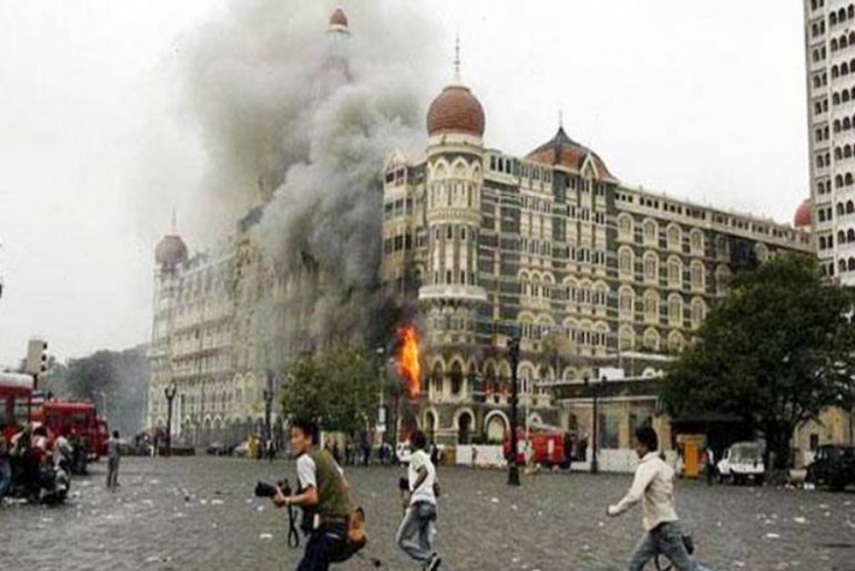Twelve years ago, on November 26, the world witnessed one of its kind urban attack by terrorists of Lashkar-e-Taiba on Mumbai, India. The 26/11, which took away 166 lives and injured more than 300, just like 9/11 remains etched on the world’s collective memory, only difference between the two is that in the Mumbai’s case, the perpetrators of the attack have not been suitably brought to justice.
Ten terrorists from Pakistan had traveled from Karachi to Mumbai on boats to execute the attacks. They had hijacked a fishing trawler boat- Kuber, owned by a Porbandar-based businessman, to enter Indian coast at Badhwar Park. (The owner of the boat has renovated it completely to bury the sordid past.) The 10 attackers of the LeT had then begun their assaults on the Mumbai city, which took many hits at places like the Taj hotel, CST station, Leopold café, and other sites.
After the 9/11 attacks in the US, and the 7/7 attacks on London, extensive inquiries were made into the cause of the attacks, where all the factors that might have led to the attacks were examined thoroughly. But, in the case of the 26/11 attack on Mumbai, a High-level expert committee, also known as Ram Pradhan committee presented a 64 pages report which was heavily criticized for the lack of required insights or depth. The report had precluded any investigation into the failure of the coordination among the various components in the national security or the failures of individual agencies per se.
In the city, Mumbai Police led operationally by Rakesh Maria and the ATS led by late Hemant Karkare were caught off-guard in a scenario that had no operational or historical precedence. They had no examples or training of such a scenario where the crimes were occurring simultaneously at multiple sites in full public view, and which were getting exacerbated with each passing minute.
First and foremost, the administration had thought that the incidents were part of a gang war in the Mumbai underworld. In this backdrop, the delay in the response of the NSG was a matter of embarrassment for the Indian security establishment. After three hours of the beginning of the attack, way past midnight, the then CM of Maharashtra had requested the GOI to send the National Security Guard. The then chief of the NSG, Jyoti Dutta had asked air transport support for the NSG team, for a lift from Delhi to Mumbai. The Air chief had communicated that the nearest transporter was at Chandigarh. After a delay of more than 2 hours, an Ilyushin76 provided by RAW picked up the NSG troopers who had to literally handpick and load their gear onboard without any other support. When they landed in Mumbai, there was no allocated pickup for them, and they had to arrange for buses to get into the action field.
The attack, as per Abu Hamza, one of the accomplices and language trainers for the terrorists, was earlier planned to be carried out in 2006 using Indian youth. After a cache of explosives (RDX) and AK-47 rifles was recovered by Indian authorities, Hamza fled from India, and the attack was postponed to 2008 and the masterminds like Lakhvi and Hafiz Saeed zeroed in on Pakistani youth.
Even after 12 years, the masterminds of the attack have not been brought to justice. Many suggest that India should carry out under the Radar strikes like US carried out in Operation Gernonimo to eliminate OBL, but what they miss is that India sits right as the immediate neighbour of an ever effervescent Pakistan, while US is three seas and one and a half continent away. And, also Pakistan is composed of such non-state entities like LeT, Hizbul, JuD which provide ideological assistance and behind the scene support for the authorities which need to keep a civil face in the international community while carrying out its fundamentalist agenda. Basically, this combination makes Pakistan unpredictable in terms of response which can trigger a nuclear inferno in the Indian subcontinent. Some consider that India’s response after the 26/11 was too mellowed with regards to responses from the current regime. The presence of a seemingly stronger assertive regime with a nationalistic portrayal of security does not completely negate the possible threats.
There is another concerning aspect regarding the 26/11 attack. It is being suspected that there has been a mole in India, codenamed Honeybee who had sourced crucial police and army training manuals to the Let Trainers of the terrorists. This was revealed in a book written by Adrian Levy and Cathy Scott-Clark. Adrian levy, in an interview, had stated that there might have been a conduit of information through the national security apparatus, which might have been in the form of a double agent. It must be underlined that many in the Indian system who Levy had tried to interview for his book ”The Siege’, were afraid of the laws like the OSA which might have hammered down their careers, and hence revealed very little, if they did at all. It should concern the security establishment in India as recently the world saw the arrest of Davinder Singh, who has been identified as the go-between man during the 2001 parliament attack. One of the prominent people who carried out recce and gathered intel from Mumbai, David Coleman Headley, born Daood Gilani, had received a two-year course on surveillance and counterintelligence from ISI through his handler Major Iqbal. This, as suggested in the book by Adrian Levy, was due to the access of the ISI over Indian files sourced from India through their leak, the Honeybee. This problem of mole is a real and insidious problem for India. If such a deep level mole is present, that would pose a long-time threat and risk to national security.
Information leaking has historically caused India huge damages from unprecedented sources with large-scale ramifications. When Morarji Desai, a gandhian who despised national security apparatus, became the PM, Pakistan saw the overthrowing of Pakistani PM Zulfikar Ali Bhutto by General Zia ul Haq. By that time, RAW established under RN Kao, by Indira Gandhi, had gathered enough intelligence about the Nuclear program at Kahuta (Project-706) in Pakistan through the sampling and testing of hair from the people in the laboratory using a salon (opposite the lab) as a local station of Indian spooks. In cooperation with Israel’s Mossad, RAW was planning to bomb the Kahuta nuclear facilities using Jamnagar, Gujarat as an air-base. But, in a casual telephone chat with Gen Zia, PM Desai inadvertently mentioned about the Kahuta nuclear facilities, which caused the death of the Indian spooks present on the field and alerted Pakistan. This had indirectly helped Pakistan to bolster its nuclear programme. As a result, it gave the non-state entities extra teeth to press forth their agenda through actions like 26/11, as they believe that a Nuclear-armed Pakistan has their back. But, this idea has been dented heavily in recent years. Over the past few years, India has taken a bit tougher stance, when it stated that another 26/11 can make Pakistan lose its Baluchistan. Also the cross-border strikes in Myanmar and POK, after the terror attacks on armed forces in Manipur and in Uri, respectively, are generally counted as symbols of a stronger posture. Without discounting the benefits of such posturing, it must be understood, that these direct approaches cannot completely help India in dealing with threats of terrorism and exceptional and alarming scenarios like 26/11.
India can approach to sort out the issue of Pakistan-sourced terrorism using operational modalities like those in Operation Chanakya in J&K or Operation Leech in NE. In Operation Chanakya, India’s R&AW had developed a pro-India movement in J&K in the early 1990s under the name and banner of Ikhwan-ul-Muslimeen. It was instrumental in creating a rift in the Hizbul- mujahideen and had created much frustration among the separatists. The separatists had the leader of the Ikhwan- ul-Muslimmeen, Kokka Parrey killed. The success of the Operation Chanakya can be gauged from the fact that Indian national anthem was being sung in Mosques in areas in J&K which were under influence of the separatists.
India can also, or rather should use new ways of thinking on National security issues like the Tenth Man principle used by Israel. This principle tries to dig out the seemingly impossible angle of any anticipated incident, the success of which depends on reliable on the ground cross-border intelligence. Both Israel and India are geographically surrounded by more or less hostile neighbours. Both of the nations have faced unpredictable attacks like the Yom-Kippur war on Israel and the 26/11 attack and Kargil War for India. Though India and Pakistan under a treaty signed on December 31, 1988, share the list of nuclear installations on January 1 every year, so that the armed forces do not attack the nuclear installations, the proclivities of the Pakistani regime under the influence of the non-state actors can give unprecedented outcomes. Ideas like Tenth man principle should be used to predict the outcomes of interactions between India’s two neighbours- Pakistan and China which can bear harmful results for India. The links between Pakistan and China is visible through projects like CPEC and Gwadar port. Pakistan gets substantial military equipment from China, which has also given it the expertise to build a nuclear arsenal and delivery system. Despite the entire rabble-rousing over China, the red dragon remains a top source of import to India, which shows that the real-world situation is far different from what the current regime is trying to portray.
Aggressive verbal posturing will not help in preventing attacks like 26/11, learning from the past lapses, filling in the gaps, internalizing principles like the Tenth Man, and learning from examples of partial success like Operation Chanakya will. But, first of all, leaks within the system (eg: Honeybee) should be identified and dealt with.





